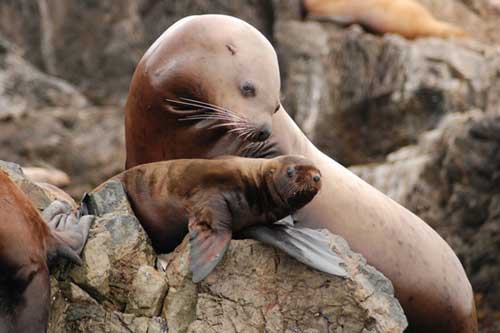
Pacific cod stocks hard hit by warming ocean temperatures are becoming a focal point at federal fisheries meetings, where harvesting sectors and processors fight over who gets to catch and process this versatile vitamin and protein packed white fish.
Stock assessments in the fall of 2019 put the population of P-cod in the Gulf of Alaska below the federal threshold that allows for commercial harvest, for the benefit of endangered Steller sea lions who rely on them as a food source.
The Gulf cod fishery was cancelled. The Bering Sea/Aleutian Islands TAC was cut from 24,319,000 metric tons in 2019 to 22,000 metric tons for 2020.
The lower quota is intensifying the race for fish, and a fight between the trawlers and the community of Adak, Alaska, over where that fish will be processed.
At the heart of the battle is Amendment 113 to the fishery management plan for BSAI groundfish. This amendment set aside a portion of the Aleutian Islands cod fishery TAC for harvest by vessels directed fishing for Aleutian Islands Pacific cod and delivering their catch for processing to a shoreside processor located on land in Adak. The 5,000 metric tons P-cod harvest set-aside was designed to provide the opportunity for vessels, Aleutian Islands shore plants and communities where Aleutian Islands shore plants are located to benefit from the P-cod fishery.
Litigation was brought against the federal Department of Commerce and the city of Adak by The Groundfish Forum in U.S. District Court in Washington D.C., in which the judge ruled against Amendment 113. The case is now under appeal.
According to city manager Layton Lockett the money made by processing the cod pays for the plant the rest of the year, as efforts continue to diversify.
[content id=”79272″]
The plant is closed in December, and most of the golden king crab processed there has already been delivered. In other months the plant processes halibut and black cod and is trying sea urchins and geoducks, plus a test fishery for opilio crab, and pink salmon, Lockett said.
Brent Paine, executive director of United Catcher Boats, backs the US District Court’s decision that Amendment 113 did not meet National Standards 4 and 8.
Paine also said that UCB boats prefer to deliver to processors at Dutch Harbor, where they get between 10 to 12 cents a pound more for their cod than at Adak. Paine said that while the allowable harvest of cod in the Bering Sea declines, the set aside portion for processing at Adak is a fixed amount of fish. “As the TAC goes down that represents a larger percentage of the catch of the trawl fishery,” he said.
There are other issues too, including closure of the cod fishery in the Gulf of Alaska for 2020. Vessels that would have fished the Gulf with an Eastern Bering Sea trawl endorsement will be looking to establish a cod market for their trawl boats in the Eastern Bering Sea, because it is an open access fishery, he said.
A report issued by the Food and Agriculture Organization of the United Nations notes a NOAA forecast predicting reduced catches in 2020, 2021 and 2022, but said that after that biomass and catches should increase.
Meanwhile, the fishery economy of Adak has only the state waters fishery to depend on for P-cod, putting the future of Adak, the small westernmost municipality in the nation, at risk.
Fishermen’s News Online grants permission to the Alaska Native News to post selected articles. Read More at: Fishermen’s News Online.









